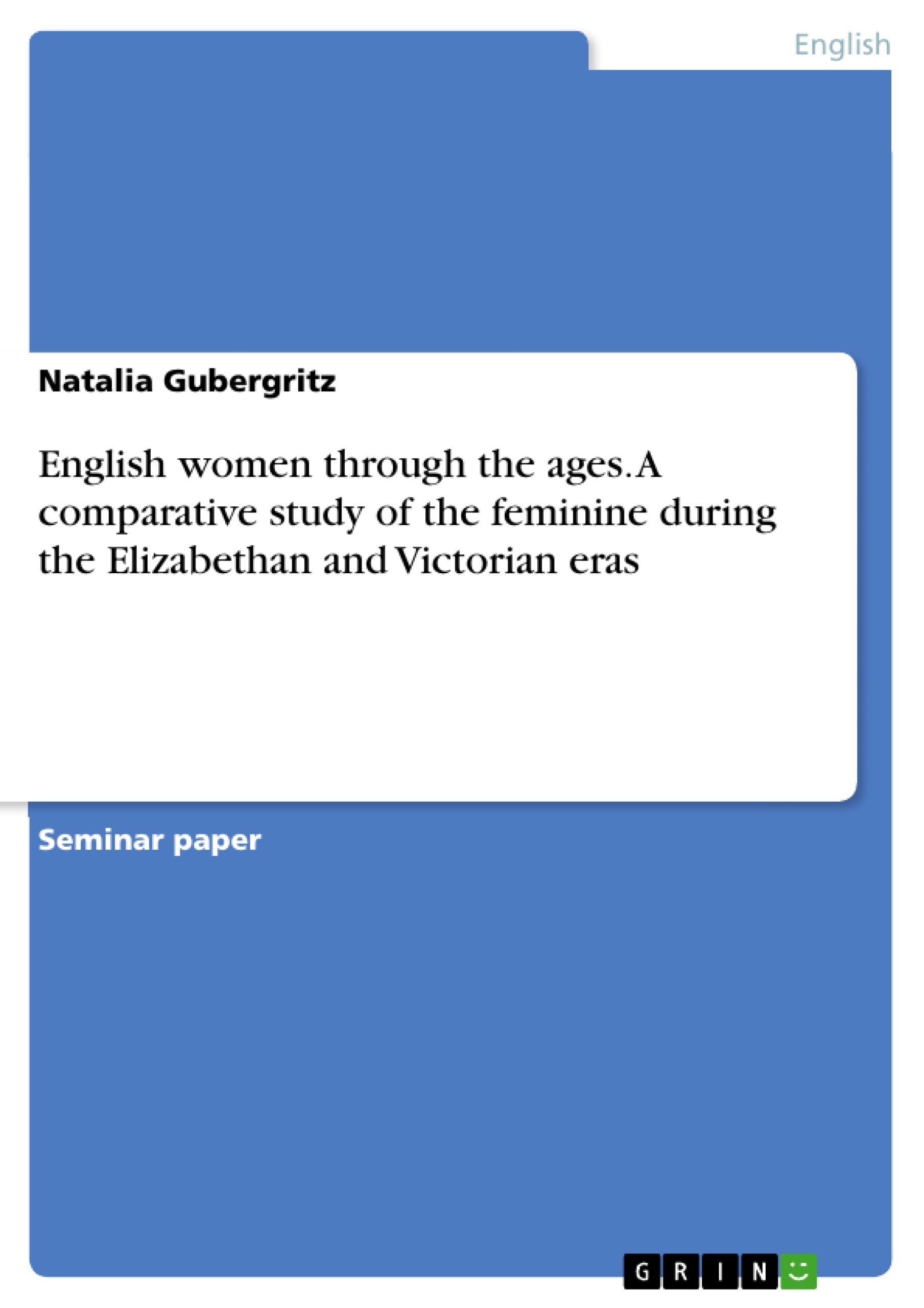Throughout the ages one particular cultural topic has occupied the minds of scholars, authors and politicians, the question of a woman’s position in society. Up until the 20th century, when feminist activists finally reached achievements with their actions, the most important being the female right to vote, which was granted to women in Great Britain in 1918 only, the woman’s inferior position to the man was seen as a given. Many works, fictional as well as academic and advisory were written throughout the ages that deal with the relations between men and women, not only by female authors, but also by male. Rooting in the basic dogmata of patriarchal society, the oppression of the “weaker” sex and the regard of women as the “weaker vessel” was justified with the Bible, anatomical facts and biological beliefs. Usually a woman was expected to be subject to her husband, father or other male superior, her job was to stay at home and take care of children and household.
Great Britain was no exception to this rule. Nonetheless it is a curious fact that the great country has existed many years under a female monarch, and this not only once. Two of the world’s most popular monarchs, who both reigned over 40 years, were the British queens Elizabeth I and Victoria. The first ruled over the country in the sixteenth, the second in the nineteenth century, but both were cause for many debates and gossip in English society of their respecting times. Each of the two women was an extraordinary woman and an important monarch, who achieved a lot for her country, and yet in their being women, both royals were typical for the women of their time. Despite their many similarities, Queen Elizabeth I and Queen Victoria could not have been more different, since they lived and ruled in different times and regarded their roles as women and rulers differently. This paper will deal with exactly these problems. I will look at the problem of women’s role in Elizabethan and in Victorian society, regarding their position according to their social, financial and marital status. Furthermore the paper will inspect the idea of the ideal woman and her position next to the man. At last I will assay the phenomena of the female ruler and analyse the figures of Queen Elizabeth I and Queen Victoria and explore their situation as women on the throne.
Table of Contents
- Introduction
- Women under Queen Elizabeth I – Ideal vs. reality
- The Queen herself
- Elizabeth's marriage conflict
- Women under Queen Victoria
- A domestic angel – The Victorian ideal
- Queen Victoria – a woman of her time
- Conclusion
Objectives and Key Themes
This paper aims to examine the role of women in Elizabethan and Victorian society, analyzing their position based on their social, financial, and marital status. It further investigates the concept of the ideal woman and her place alongside men. Finally, the paper will analyze the phenomenon of female rulers, specifically exploring the figures of Queen Elizabeth I and Queen Victoria and their unique situations as women on the throne.
- The societal expectations and realities of women's lives during the Elizabethan and Victorian eras.
- The evolving concept of the ideal woman and her role in society.
- The complexities of female leadership in the context of patriarchal societies.
- The influence of religious beliefs on the perception of women's roles.
- The impact of social and economic status on women's opportunities and experiences.
Chapter Summaries
The introduction delves into the historical context of women's position in society, highlighting the enduring question of their place. It underscores the prevailing patriarchal structures that relegated women to a subservient position, primarily as wives, mothers, and homemakers. The chapter emphasizes the contrasting realities of women's lives despite the societal expectations of their time.
The chapter on women under Queen Elizabeth I explores the era's cultural achievements and the contrasting limitations placed upon women. It examines the prevailing societal expectations of women as subservient and dependant, their limited education, and the importance of chastity in determining their worth. The chapter also analyzes the influence of religious beliefs and the prevailing patriarchal structures on shaping the role of women in society.
The chapter on women under Queen Victoria focuses on the Victorian ideal of the woman as a domestic angel, highlighting the expectations placed upon women to fulfill the role of wife and mother. It explores the complexities of Queen Victoria's reign as a woman in a time of significant social and political change, and analyzes her experiences as a woman and a ruler.
Keywords
The main keywords and focus topics of this work are: Elizabethan era, Victorian era, women's roles, gender roles, societal expectations, ideal woman, female leadership, Queen Elizabeth I, Queen Victoria, patriarchal society, religious beliefs, social status, economic status, marriage, family, education, chastity, domesticity.
- Quote paper
- Natalia Gubergritz (Author), 2009, English women through the ages. A comparative study of the feminine during the Elizabethan and Victorian eras, Munich, GRIN Verlag, https://www.grin.com/document/412994




